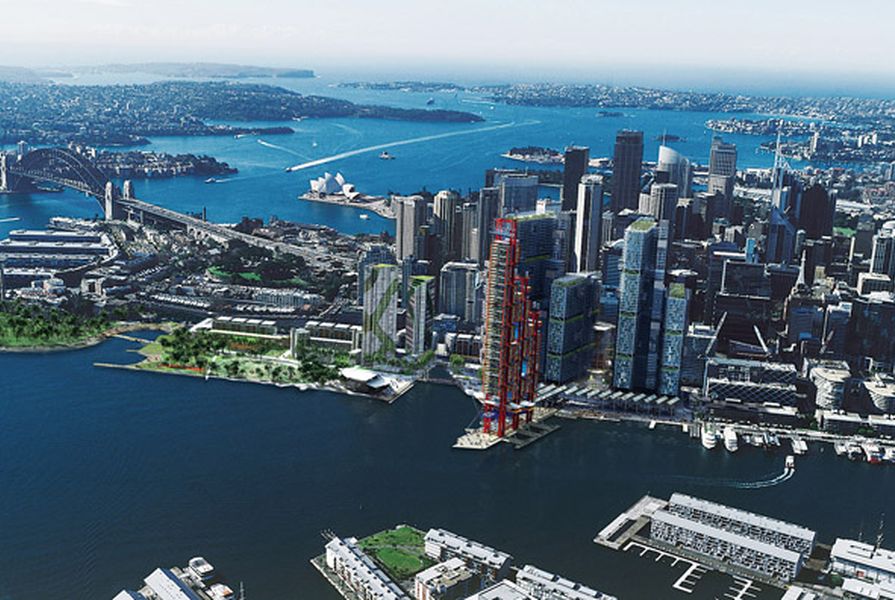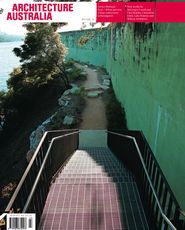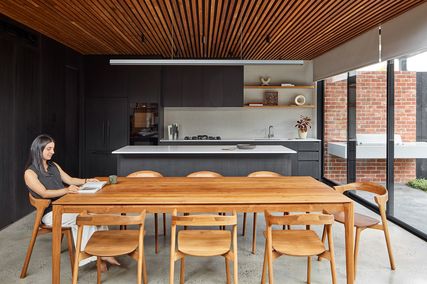Barangaroo, the person, is variously referred to as a Gadigal or Gamaragal woman and the partner of a Wangal man, Bennelong. Each is commemorated in the name of prominent areas, once headlands jutting into the post-glacial waters of Sydney Harbour. However, this naming is associated with different cultural territories, now referred to as “country,” and in reverse. The difficulties of cultural identity, of place and of naming are also evident in the reverse vision of naturalism prominently espoused by Paul Keating representing the Barangaroo Delivery Authority – the authority we had to have.
The Aboriginal name for the point of land colonial Australia variously calls “Jack, the Millers Point” or “Cockle Bay Point” is Coodye, while Tobegully is the Indigenous name for Bennelong Point. Both Coodye and Tobegully have lost their Indigenous sandstone topography and meaning. Both have been cut to form monumental escarpments, with the fill creating a level field following reclamation of the adjacent harbour waters. The fill comprised not only the cut sandstone, but the fabric of former Sydney buildings of the colonial and Victorian periods, which had formed significant components of the Sandstone City. Both reclamations are fields of lost culture and lost opportunities, as well as monuments to the labour of human industry to establish port facilities in an economy of greed.
Both sites have also been subject to visionary human endeavour. The infilled waters off Tobegully now support the conspicuous and inspired Sydney Opera House complex, once the vision of Jørn Utzon and ultimately adapted by the bureaucratic and personal whims of the NSW Government. Coodye’s future has been subject to similar processes with the enthusiasm of the former prime minister’s vision of a reconstructed headland (or, more correctly, less than half a headland). While the visionary spirit is to be commended – particularly for a politician, former or otherwise, in Australia, the nature of the vision needs to be questioned. We should also question whether the open space proposed is to be a truly public domain. Will it contain inspirational spaces that support the city and contribute to its future landscape character, or will it be more of the same fuelled by greed, corruption, fear and mediocrity?
The creation of a green headland and fake “cove” to compensate for the lost topography of Coodye and the Tumbalong foreshore does not necessarily mean the reconstruction of a pre-known form such as the two-dimensional pattern offered by the 1836 plan of Sydney’s estuarine inner harbour. Consideration needs to be given to providing suitable microclimatics for human occupation in an area subject to extreme westerly winds and the solar exposure associated with its western aspect, together with possible impacts of climate change. Before the glacial meltdown, the Coodye point formed part of a residual ridge-and-spur landform, helping to define the former river valley in a very different physical context from the present. To what period and landscape setting should the reversal vision accurately relate to?
The public open space on the primarily post-industrial lands from the mid-twentieth century that front Sydney Harbour have been very proudly conserved in ways that interpret both Aboriginal occupation and industrial heritage. For a former Labor prime minister not to acknowledge and celebrate that heritage, while remaining committed to a green future, is odd.
The Rudd Government has said sorry. It is time to move forward, learn the lessons of the past but not necessarily act backwards. We need to look and see ahead in a truly creative way.

















